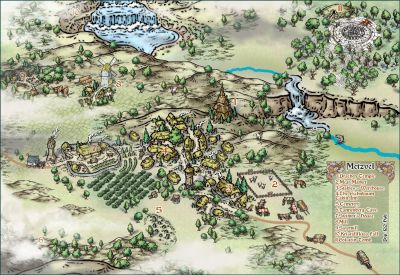
Monsen
Monsen
About
- Username
- Monsen
- Joined
- Visits
- 693
- Last Active
- Roles
- Administrator
- Points
- 8,945
- Birthday
- May 14, 1976
- Location
- Bergen, Norway
- Website
- https://atlas.monsen.cc
- Real Name
- Remy Monsen
- Rank
- Cartographer
- Badges
- 27
-
The Wittan Islands
-
Vector Mapping and natural Earth data from 2014 Annual
Not sure why you can't change the colors here. I went through the instructions and it seemed to work as described for me.
Which color is it you have problem changing? The color of the costlines, or the background color?
I don't know about any videos or additional instructions, unfortunately, but the data is quite detailed, so you should be able to cut out the pieces you need and not use the entire world after importing it.
-
Does anyone have a Greyhawk underdark CC2 or CC3/CC3+ map ?
-
Delete Duplicate Entities
If you have entities that are completely identical (same position, same properties), you have to select them by entity tag number (scroll down a bit on that page to find the specifics for that particular one).
And yes, the group tags you see in the list output is also an entity tag number, so you can delete a whole group that way. (Individual entities inside a group can only be selected if groups are unlocked, and the group tags can only be selected if groups are locked).
-
Importing real world map
You can use the TRACED command to trace it automatically, but you do need to make a small config file change to work around a bug in the current version.
-
moving items using command line, starting from top right
CC3+ should handle negative numbers just fine, just make sure there isn't an extra space between the minus sign and the number.
Also keep in mind that you have two options when typing coordinates.
Either you type the destination coordinates outright (112,45 or 112,-45 etc.), and in that case you don't use negative numbers since all the coordinates in the map are positive (except some special templates)
Or, you use the relative coordinates for a relative movement from the move origin, in which case you prefix with @ and negative numbers means downwards and leftwards (ex @10,20 or @-10,20 or @-10,-20 etc.)
-
Red X's on Maps
When you make a map in CC3+ and insert symbols and fills the proper way (i.e. use the provided symbol catalogs and drawing tools), the map will reference the CC3+ data directory. This means you can move the map wherever you want (even to another computer, as long as the products are installed) and it will still work (Even if the data directory is installed to another location on that other computer). The only important thing here is to NOT move around the art files inside the data directory, they need to stay where CC3+ put them
When you manually insert files, like a bitmap for tracing, it is usually either inserted with an absolute path, meaning if you later move the bitmap anywhere, the map won't find it and you get a red X, or a map-relative path, which means you need to keep it in the same relative location as your map (usually the same directory) and move both when you move one.
If an example map shows red X's, it is because it use stuff from a product you haven't installed.
You can always figure out where things are supposed to be by using the Info -> List command on the entity with the red X, or if it is a symbol, open symbol manager, find it in the list, and hit the list button.
-
can't select symbols
-
Cosmographer Traveller Sector Import
I am unsure why it is happening, but it does seem like it is a problem with translating the colors from the website into CC3+ colors, so they all end up at the default. I couldn't get it to behave myself, so I've asked those that knows more about this than me to look at it.
But, I did notice that if you use the "generate script file" option from the import dialog, you get a script file you can run to make the drawing. And the advantage here is that this is a text file you can edit. The first part of it is all the polys for the borders, and you'll noticed they are all prefixed by a COLOR 15 statement. You can then simply edit these, changing them to other color numbers, and then run the script file from inside CC3+ (Tools -> Macros -> Script File). You'll be editing a little blind since it is difficult to envision the look of the polygon from these candidates, but at least you can just keep the script file, tweak it, and re-run it....
-
Inn for Japanese inspired adventures










